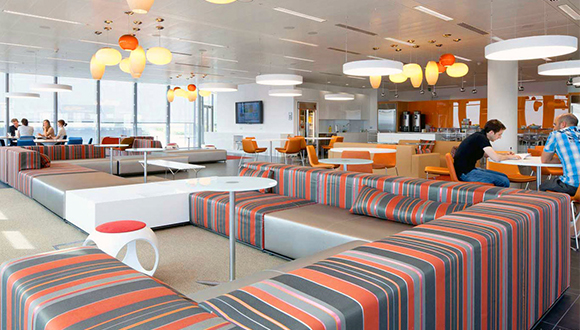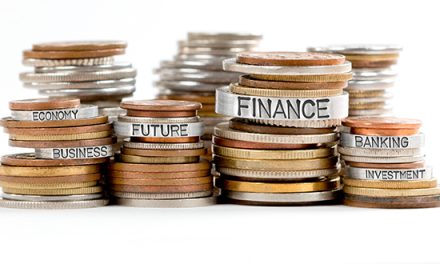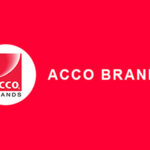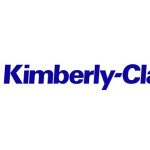The modern workspace is undergoing a significant evolution. Companies are rethinking and reimagining their offices to align with new priorities – from flexibility and collaboration to sustainability and employee wellness.
1. Hybrid workspaces
The pandemic has prompted many companies to adopt remote and hybrid work, with over 90% of organizations combining remote and on-site work. Office spaces must balance in-person teamwork with amenities for employees who split time between home and the office. Design elements like Zoom Rooms, touchdown spaces, hot-desking options, and technology can help create a hybrid workspace that fosters connection, innovation, and culture while providing flexibility for teams.
2. Biophilic design
Biophilic design is a trend that incorporates nature into the built environment, boosting productivity, creativity, wellbeing, and employee satisfaction. This approach involves maximizing natural light, greenery, organic patterns, and natural materials. Biophilic elements include living walls, green roofs, courtyards, plants, and nature-inspired artwork. This approach also allows for unique branding and aesthetics, making it an attractive option for companies seeking a vibrant, inspiring workspace.
3. Technology integration
The integration of IoT and connected devices in businesses enables intelligent, responsive environments. This includes occupancy sensors, traffic flow analysis, smart LED lighting, interactive screens, apps for space booking, voice assistant technologies like Alexa, and digital signage. Smart office technology provides data insights, enables dynamic workspaces to respond to evolving needs, optimizing efficiency and creating personalized employee experiences.
4. Flexible and modular spaces
Modular furniture systems offer flexibility in office layouts, allowing companies to create collaborative zones. These spaces can be easily reconfigured into large communal areas or semi-private nooks, with moveable walls, acoustic dividers, and multi-use furnishings. Hot-desking and shared desks provide employees with the freedom to choose their work location. This fluid design approach empowers employees and caters to the natural flow of office-based work, allowing spaces to be modified to suit changing team dynamics and needs.
5. Sustainability and eco-friendly practices
Companies are prioritizing sustainability to reduce their carbon footprint. This includes operational energy efficiency, renewable energy solutions, and sustainable build materials. Other eco-conscious practices include responsible waste disposal, recycling programs, low-emission paints, motion-activated lighting, renewable energy sources like solar panels, green roofs, smart water refill stations, and electric vehicle charging stations. A sustainable office benefits the bottom line by demonstrating commitment to environmental values and contributing to a positive brand image in an era of conscious consumerism.
6. Mental health and wellbeing focus
The blurred lines between work and life have led to increased workplace stress. Office design trends 2025 focus on promoting employee mental health and wellbeing. This includes creating private spaces for relaxation, providing natural light and greenery, ergonomic furnishings, gyms, walking trails, and policies encouraging work-life balance. Collaborative spaces help build social connections and community. Workplace culture plays a significant role in nurturing wellbeing, with an intentionally designed, inspiring environment fostering happiness, reducing stress, and improving employees’ daily experiences.
7. Colour psychology and aesthetics
Office interior design aesthetics influence mood and motivation levels. Bright, vibrant colors energize, warm neutrals promote relaxation, and cool hues like blue or green calm. Strategic use of color, textures, artwork, furnishings, bold accent walls, and branding elements enhance creativity. A well-thought-out use of color, lighting, and decor creates an inviting, branded environment where people enjoy working and connecting. Psychological balance is crucial for optimal performance.
8. Multi-functional spaces
The modern office is transforming from a productivity-focused space to a multi-functional one, offering amenities for rejuvenation and recreation. These include gyms, nap pods, massage rooms, games lounges, cafes, outdoor spaces, and hidden lounges. Quiet libraries and meditation rooms provide calm reflection. This all-encompassing environment fosters innovation and nurtures company culture, allowing employees to seamlessly transition between collaboration, events, and decompression activities.
9. Inclusive design
Inclusive design is crucial for businesses to cater to a diverse workforce. Strategies include ADA compliance, gender-neutral spaces, prayer rooms, meditation areas, ergonomic desks, signage in multiple languages, natural light for energy and seasonal affective disorder, and providing a variety of work settings. Inclusive offices make employees feel accepted, valued, and able to thrive. Diverse companies are more successful at attracting top talent and outperforming industry norms by 36%.
10. Local culture and brand integration
Leading companies are incorporating local culture and brand into their offices, incorporating murals, reclaimed woods, and native greenery to celebrate the city or country’s heritage and native features. This fosters community and encourages collaborations with neighborhood businesses. Additionally, companies aim to have workspace design reflect their values and brand identity, using custom signage, display walls, murals with company slogans, and branded color schemes. This modern office design creates a welcoming, on-brand environment that employees can take pride in.
Source: Office Principles











